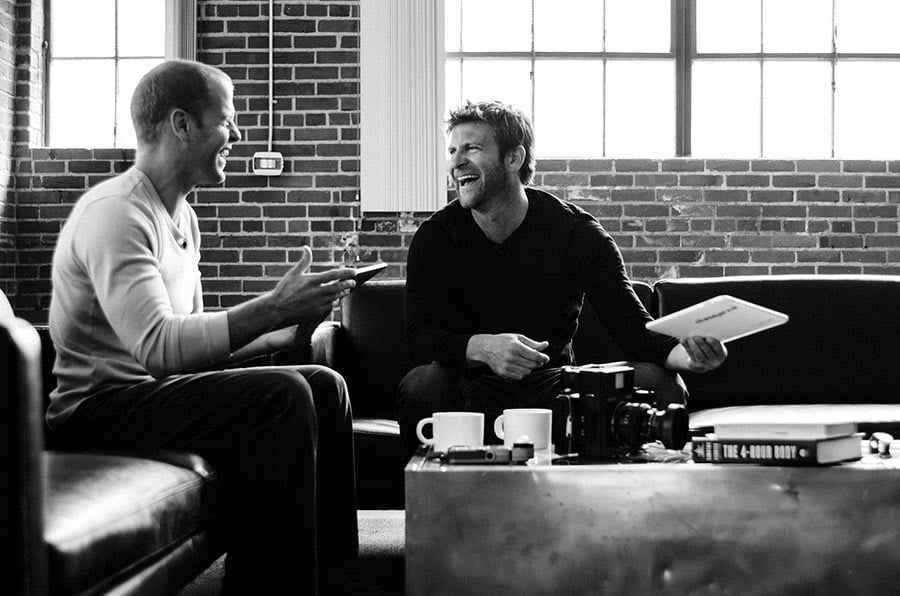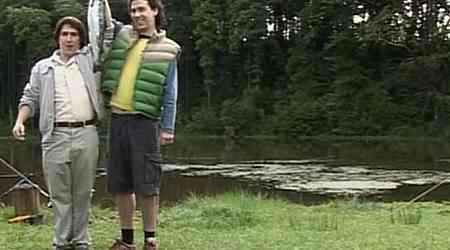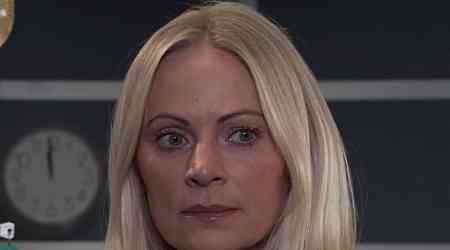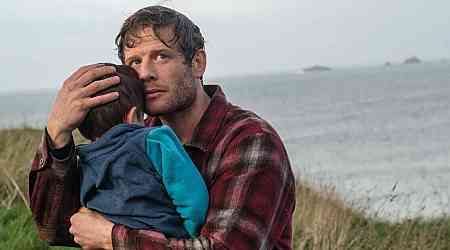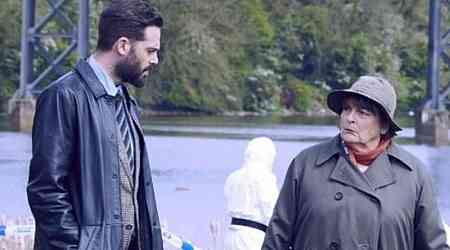The following is a guest post from Chase Jarvis (@chasejarvis), the founder of CreativeLive, the world’s largest live-streaming education platform for creatives and entrepreneurs, which was acquired by Fiverr (FVRR: NYSE) in 2021. He is also a master photographer, Emmy-nominated director, and the bestselling author of Creative Calling.
Chase is the only person ever to be named a Hasselblad Master, Nikon Master, and ASMP Master. He has contributed photography to Pulitzer Prize-winning journalism, and his commercial work has spanned campaigns for Nike, Apple, Red Bull, and others, earning him Forbes’ title of “The Photographer Everyone Wants to Work With.” Chase’s fine-art installations appear in prominent galleries and the collections of high-net-worth individuals alike. Chase was also one of the very first guests of The Tim Ferriss Show podcast.
His new book is Never Play It Safe: A Practical Guide to Freedom, Creativity, and a Life You Love and is out today.
Please enjoy!
Enter Chase Jarvis…
“Security is mostly a superstition. It does not exist in nature, nor do the children of men as a whole experience it. Avoiding danger is no safer in the long run than outright exposure. Life is either a daring adventure, or nothing.” — Helen Keller
In my mid-twenties, my wife Kate and I were living in a tiny apartment in Seattle. I was working in a ski shop to make ends meet. There were a lot of voices in my head telling me how I had screwed up the familiar patterns of school and job, plus I had a boatload of doubt, no money, and few role models. Even though I whispered to those closest to me that I wanted to be a photographer, I was too scattered—and too scared—to actually pay attention to what I might have to do to make that dream a reality.
I spent the first few months of that time dabbling, working in the shop, explaining myself to everyone I knew, and trying but failing to hone my craft. My attention was too fractured to get anywhere, but at a certain point, it was do or die. Yes, I had to earn a living, but more importantly, that rare, humble, honest version of myself that sometimes showed up on morning walks or while gazing at golden-orange sunsets had a point: I had to stop f*ing around and making excuses. I had to stop paying so much attention to the toxic voices in my head telling me I’d never make it as a photographer and instead go all in on the next right step that would get me where I wanted to go.
Those early days were filled with doubt, uncertainty, and countless questions about how to make my dreams a reality. I didn’t know how to make the leap from amateur photographer to full-time artist. I had almost no real-life examples of how to do what I wanted to do. I couldn’t afford the time or money it would have taken to go to art school. But I realized that no one was coming to hand me a guidebook and that if I wanted to succeed, I’d have to forge my own path. Over time, I discovered key principles that helped me transform those doubts into action—tools that reside naturally within us all, that anyone can use to ignite their creative potential and break away from the illusory ‘safe’ life that our culture wants most of us to live.
In this post, I’m going to share 7 ‘levers’ that I’ve discovered that can help you unlock your potential. These aren’t vague motivational phrases—they’re practical, actionable tools that will take you from feeling stuck to finding freedom in your creative work and your life. With AI rapidly taking over jobs that machines can easily do, human creativity has become more crucial, and more valuable, than ever. It’s not just about popsicle sticks and glue guns; it’s about cultivating the habit of thinking differently and operating differently, a way of living that keeps you on the unique frontier, ahead of the machines, and in line with a life worth loving.
Creativity isn’t just a nice-to-have anymore—it’s an essential skill, a must-have that will keep you relevant and thriving in a changing world. Each lever is a tool I personally learned to wield in my journey from being a small-town Seattle artist to working with many of the biggest brands and boldest projects in the world, and I’m going to show you how to use them in your own life.
Lever 1: Constraints—Unlocking Creativity with Limitations
Early in my career, I discovered that creativity thrives under constraints. Whether it was when I couldn’t afford the best camera gear or later when I intentionally set boundaries on projects—like budget, time, or other easily implemented frameworks—I recognized that limitations forced me to innovate. The results were demonstrably better than when I failed to implement, or ignored, constraints.
Constraints aren’t obstacles—they are opportunities to think differently, to find solutions you wouldn’t have considered if you had every resource at your disposal. It was during those times of limitation that I learned the most and pushed both my creativity and my life to places I didn’t think they could go.
Actionable Steps to Constrain for Growth:
1. 7-Minute Creative Challenge
Set a timer for 7 minutes and complete a creative project within that time frame. Whether it’s writing a short story or sketching something, the goal is to create without overthinking. Embrace imperfection. I do this almost every day in some capacity—journaling for 7 minutes in the morning, capturing 7 images on my phone within my immediate surroundings, or crafting a creative social media post. These quick, deliberate bursts of creativity help me stay sharp, spontaneous, and unafraid of imperfection.
2. Resource Limitation Challenge
Choose a project and give yourself a constraint. Use one lens for a week or write with only a notebook and pen. By forcing yourself to work within limits, you foster innovation. For me, I was the first high-end professional to lean into the iPhone as a real photographic tool, publishing the world’s first book of iPhone photos and creating the first iPhone app that used photos as the basis for a social network. Another time, I was featured on a top YouTube channel in China, where I was challenged to shoot professional-level images—skateboarding, portraits, street photography—using a camera literally made out of Legos. These constraints pushed me creatively in ways I simultaneously loved, but couldn’t have imagined, proving that limits can truly unlock new levels.
Lever 2: Failure—A Feature, Not a Bug
Turn back your mental clock to April of 2012, when Facebook acquired Instagram for the staggering sum of $1 billion. It was all over the news, not just in the tech circles but mainstream media too—a true Cinderella story. I watched with amazement like the rest of the world, but that amazement was tempered by a pang of regret. In a not-so-different world, it could have been my company making those headlines.
Back in 2009, I had created a photo-sharing app called The Best Camera that beat Instagram to the market; had millions of downloads; was hailed in ‘App of the Year’ lists in the New York Times, MacWorld, and elsewhere; and was heavily featured in Apple’s global marketing. And yet, despite all of this early success, my app never reached its full potential. A few critical mistakes known by tech-industry insiders and experienced by my community of users derailed acquisition interests and my billion-dollar opportunity.
Nearly all of us from an early age are conditioned to avoid failure. But this mindset is what keeps most people from creating anything at all! Failure isn’t the end; it’s an integral part of almost any process. Early in my career, I tried so hard to succeed without ever taking risks, and it led to nothing but mediocrity. The moment I began embracing failure as a necessary feature of my journey, things started to shift.
The experience with my photo app taught me painful but valuable lessons, and each failure along the way shaped me into a more resilient, more creative, and more confident person today. In just one clear example, I took those Best Camera lessons and used them to launch CreativeLive, which was acquired by a public company and today serves millions of students worldwide.
Embracing failure is what separates those who make a mark from those who never even try. It’s why failure isn’t something to fear; it’s a signal, a signpost that guides you toward growth.
Actionable Steps to Reframe Failure as Growth:
1. Failure Postmortem
Make notes in a journal about a recent failure, but instead of judging yourself, break it down objectively: What went wrong? What did you learn? What can you do differently next time? This practice turns what could feel like a setback into a lesson. When Instagram sold for $1 billion, it was a punch to the gut, because it could have been my app in those headlines. In my postmortem, I realized that the mistakes were simple but costly:
- Trusting the wrong development partner.
- Not enough detail in the legal contract.
- Failing to keep the app’s code and key assets on my own servers or in the cloud.
These oversights stalled our momentum and left me watching from the sidelines. But analyzing these failures objectively transformed what could have been a career-ending defeat into the blueprint for building CreativeLive—turning painful lessons into invaluable stepping stones for future success.
2. Tiny Experiments
Reframe the thing you’ve been avoiding as a tiny experiment. Instead of fearing failure, think of it as an opportunity to gather information. Commit to taking a step toward it within the next 48 hours, with the goal of learning rather than succeeding. When you view actions as experiments, failures don’t sting as much because they’re part of the process. This approach not only makes the risk feel smaller, but it also conditions you to value learning over outcomes. Taking action, even when facing potential failure, is a crucial step toward unlocking your creativity. Every so-called failure becomes data—a step forward rather than a setback. Failure can either be a wall or a door, and reframing it as an experiment allows you to choose the door every time.
Lever 3: Attention—Harnessing Your Superpower
In the age of infinite distractions, focus is a superpower that determines the difference between success and mediocrity. But here’s the catch: no one else can do this work for you. If you let others control your attention—whether through endless scrolling, notifications, or expectations placed on you—you’ll never unlock your true creative potential.
Attention is your most valuable currency. I had to learn this through trial and error, switching from a career that I thought others wanted for me to one I knew deep down I was made for. When I focused, my world expanded in the areas I dedicated my time to. Where I put my attention dictated what I became.
Actionable Steps to Reclaim Your Focus:
1. Define Your “Attention Zones”
Every morning, choose two zones where you want to direct your focus. These could be areas like building a skill or connecting with family. Write down one specific action for each zone that deserves your full attention today. Think of this as a workout for your attention span, developing focus on demand so it’s there when you need it most. Use a Pomodoro timer (there are online options, but I prefer a physical timer)—25 minutes on, no interruptions, then take a break. This kind of deliberate practice is where focus turns into mastery, training your mind to be sharp and responsive whenever you call on it.
2. Daily “Attention Audit”
At the end of each day, do a quick audit. Ask yourself: Where did my attention go today? Which distractions pulled me away? Write them down, and make adjustments to improve your focus tomorrow. I had to make this a ritual to understand what was draining my energy and how I could direct it back into my creative pursuits. For a broader view, consider doing a weekly audit using your iPhone’s built-in screen-time tracker or Toggl Track to get detailed insights into where your attention is going. Apps like Freedom.to and StayFocusd can also help you block distracting websites or apps during creative work sessions, letting you carve out focused time for what truly matters.
Lever 4: Time—The Magic of Presence
One of the biggest breakthroughs in my life came when I understood that it wasn’t about finding more time; it was about changing how I perceived and used the time I had. Instead of managing time like a fixed resource, I began to see it as malleable, something that could expand or contract based on my focus and the activities I chose. This meant creating conditions for flow, where time seemed to stretch as I engaged in what I loved. It also meant recognizing that life is long and that the rush to always do more often robbed me of the richness of the present. When I focused on the activities that brought joy and novelty, time seemed to open up, and I became far more effective.
It’s easy to say you’re busy, but what are you busy with? Other people’s expectations or your own meaningful pursuits? Instead of seeing time as something to manage, try seeing it as an experience to craft. When we are present, fully engaged in the now, we find that life becomes less about scarcity and more about depth and richness. Creativity demands presence. It demands moments of undistracted effort where you can go deep, explore, and build. To truly move the needle, stop trying to manage time, and instead cultivate flow and presence—embracing the long view of a life where moments are crafted deliberately and with intention.
Actionable Steps to Redefine Your Relationship with Time:
1. Create a “Time Budget”
Spend a week observing how your time is spent. Instead of focusing on strict management, see time as malleable. Notice the moments when time seems to rapidly slip away—like scrolling on your phone or mindlessly watching something just to kill time. Notice when you engage in activities that you love, where you experience flow—a state where time seems to expand and you’re far more effective. Time-tracking apps like Toggl Track or RescueTime can help you to identify distractions, while a physical notebook or a journal app like Day One can be used to track your reflections on what activities bring you into a state of flow. Tools like Brain.fm or Focus@Will can help enhance focus, making it easier to enter a flow state. By observing and adjusting how your time is spent, you can observe time dilating and constricting and more intentionally choose to shift more of your time into the expansive, rewarding experiences.
2. Deep Time Blocks
Twice a week, schedule a 2-to-4–hour time block to focus deeply on your most creative work—something you love. No interruptions. No ‘tasks.’ Let this be a sacred window where you can disconnect from clock time and its traditional trappings. I’ve learned that if I want to address a problem or go into a special creative headspace, it usually requires a minimum of 90 minutes to make progress. As an extension of this idea, I freakishly protect the first ninety-minute block of my day for my morning routine. It’s the one thing I know can make a huge difference in the success of my day, week, and life. What I do during this time may vary, but it always involves some level of intention, mindfulness, self-care, and some form of movement or exercise to get mentally focused for the day.
Here are some examples:
- Intention: I often dedicate time to journaling as a way to reflect on and clarify my thoughts, writing down my intentions each day to stay focused on what matters.
- Mindfulness: I use a body scan exercise, spending a few minutes checking in with different parts of my body to help me stay present throughout the day.
- Self-Care: I embrace cold plunge therapy, which refreshes my mind and body, preparing me to take on challenges with a renewed sense of focus.
- Exercise: My morning workout—a mix of cardiovascular activities and resistance training for 30 to 45 minutes—allows me to start the day mentally sharp and fully energized.
Lever 5: Intuition—Trusting Your Gut
Your intuition is like a compass—it always knows where to take you, but you have to be willing to listen. I ignored my gut for a long time, and it led me into a path that was culturally “safe” but deeply unfulfilling. I chased a career in professional soccer and then medical school because it was what others wanted for me, but it was ultimately abandoning both of those directions and returning to photography that set my soul on fire.
It’s hard to trust yourself when society constantly tells you that risk is unhealthy or unreasonable and that you should stay on the well-worn path. But emerging science reveals something fascinating: rational thought is often slow and fumbling, while intuition is quick and comprehensive. The truth is, the people who achieve greatness are those who learn to trust that small voice. The more I listened to my gut, the more it became a reliable source of guidance. Like any muscle, I was strengthening it with use. Once I began leaning into that intuitive pull, my life changed, and my creativity exploded.
Actionable Steps to Reconnect with Your Inner Compass:
Intuition Field Trip
Give yourself a Saturday—reminiscent of Julia Cameron’s “Artist Date” from her legendary masterwork The Artist’s Way—and fill the day with whatever you are drawn to do. First, set aside your technology. And then, since intuition lives in the body, start your day with a walk outside in nature (a park if you are urban) and really tune in to the sensations in your body. What do you feel, smell, and notice? Let your awareness expand to find a calm joy in this state of connection and relaxation as you walk for as long as you desire. Throughout the day, let your guiding question be What next? Listen to the soft, small voice of intuition for guidance. No busyness, no hurry. Simply listen, act, and notice. Go anywhere, and do anything that you’re called to do. At the end of your experiment, reflect on the process. How were you able to listen? What did you feel?
How to Know Your Intuition is Speaking
Here is a non-exhaustive-but-hopefully-helpful list of internal signals that your intuition is at work:
- Body signals—Pay attention to the physiological responses, such as a “gut feeling” or a sense of calm, that may indicate intuition at work.
- Immediate impressions—Notice your spontaneous thoughts or feelings and contrast them with the slower, analytical process of conscious reasoning.
- Past experiences—Reflect on moments in which your intuition proved accurate, usually in a snap judgment or moment-based experience sort of way.
- Energy alignment—Look for sparks of energy or little bursts of confidence . . . a genuine feeling that you are on track.
- Emotional alignment—Intuitive feelings often align with positive or negative emotions. Genuine intuition tends to evoke a sense of rightness or wrongness about a situation.
- Athletic Mind—A phrase used by renowned sports psychologist Bob Rotella, athletic mind describes the moment when someone clearly envisions an outcome and then trusts the subconscious to deliver, as opposed to tediously and consciously reviewing every aspect of a skill. In other words, Yoda had it right: “Do or do not. There is no try.”
Lever 6: Play—The Most Important Work We Do
When we think of work, we think of grinding, pushing through obstacles, and staying serious. But what if the real magic—the breakthroughs, the creative leaps—happens when we allow ourselves to play?
Happiness can often feel temporary and fleeting, with our accomplishments seeming ephemeral, leaving us lost in a sea of seriousness. But it doesn’t have to be that way. To live a more meaningful life, we don’t need another vacation, a new hobby, or another workout routine. We don’t need an endless stream of self-improvement projects piled onto an already overstressed life. What we truly need is a life we’re not trying to escape, a life where play and joy are woven into our everyday work, allowing us to experience deeper fulfillment and uncover the breakthroughs we’ve been searching for.
Play is often undervalued, but it’s one of the most powerful tools a creator can wield. When I loosened my grip on the idea of what creativity was supposed to look like, for example, not just with traditional art or creative pursuits like business, that’s when the best ideas—and highest revenues—flowed. That’s because play is where the best version of ourselves is born, where we experiment without judgment, where failure isn’t feared but embraced. For me, looking back on my career and life, it’s clear that most of my favorite work has come not from overplanning or grinding but from experimenting, having fun, and letting my curiosity lead the way.
Actionable Steps to Integrate Play into Your Creative Life:
1. Weekend Play Session
This is the opposite of the Resource Limitation Challenge (from ‘Lever 1: Constraints’). A Weekend Play Session is a much looser approach, where you’ll spend 15 minutes each day doing something fun—with no goals attached to it. Doodle, explore photography with no rules, or create music just for the joy of it—ideally off your device to get real dopamine. This time is about exploration without the pressure to produce something ‘good.’ If you don’t know where to start, look back at your childhood. Activities like smashing baseballs, building puzzles or Legos, racing RC cars—whatever brought you joy as a kid—often hold the answers. Letting go of the outcome and focusing on the joy of the process will more often lead to breakthroughs.
2. The Mindful Chore Challenge
Let’s take a task that one might label as a chore: folding the laundry. The next time you hear the buzzer on the dryer and it’s time to fetch the clothes, do the following. First, notice that buzzer—really hear it—and be grateful for a device that is smart enough to notify you when it’s done working on your behalf. Next, walk up to the dryer and open it. Feel the warm air on your face as the heat escapes. And listen to the sound—the little creaking sound of the dryer door. Smell the pleasant, clean smell—a combo of detergent and dryer sheet. Then reach your hands into the dryer and grab all the clothes, while paying special attention to the soft feeling of the fabric and, again, the warmth. Notice all the colors in the pile, some bright, others faded. Really be present for the folding experience. Then, have fun with it.
Lever 7: Practice—Success Leaves Clues
Every successful creator I’ve ever met, studied, or admired has one thing in common: they show up. Day in, day out, they put in the work, even when they don’t feel like it. Consistency and practice are the real magic behind creative success.
The truth is, creativity isn’t about waiting for inspiration to strike—it’s about being there when it does. It’s about creating conditions in which inspiration can find you at work. For me in photography, that meant taking my camera everywhere, shooting every day, even when the conditions were less than perfect, and even when I didn’t feel like it. In business it meant developing systems that were always oriented toward iteration and always ‘shipping’ our products and services before they were perfect.
Actionable Steps to Build a Creative Practice:
1. Create a Daily Practice Routine
Choose one skill or craft that matters to you and dedicate at least 20 minutes to it every day. Whether it’s coding, writing, or anything else, commit to this practice without exception. The goal is momentum, not genius. Tracking your progress, using an app like Habit Tracker or Atoms, helps you stay accountable and see growth over time. I made this commitment to photography years ago—and dozens of other skills since then—and these consistent daily actions have been transformative, whether that was turning my passion into a career or simply growing quickly in an area of interest.
2. Study Who Inspires You
Identify someone whose creative journey inspires you, whether they are in art, science, or entrepreneurship (it’s all part of the creative spectrum!). Study their routines, habits, and approaches. What time do they work? How do they overcome obstacles? What are their key assets? Biographies, biopics, and documentaries are powerful resources that can reveal how creators create, offering insights into their mindset and process.
Here are some of my personal favorites:
- Books:
- Documentaries:
Adopt one of their habits into your own daily practice for the next month. Learning from others provides a unique glimpse into what it takes to achieve greatness and offers us the opportunity to weave those practices and mentalities into our own lives.
Choose Your Lever and Start Today
The path to unlocking your creative potential isn’t about extraordinary circumstances—it’s about leveraging the natural tools we all have inside us. These 7 levers can change everything if you put them to use.
So pick one today, and in your own messy, imperfect way just START. Share your vision or journey in the comments, along with the rest of Tim’s community. Your most bold and creative life lies just beyond your comfort zone.
This post was adapted from Chase’s new book Never Play It Safe: A Practical Guide to Freedom, Creativity, and a Life You Love.

The post Never Play It Safe: 7 Levers to Unlock Your Creative Potential appeared first on The Blog of Author Tim Ferriss.


















